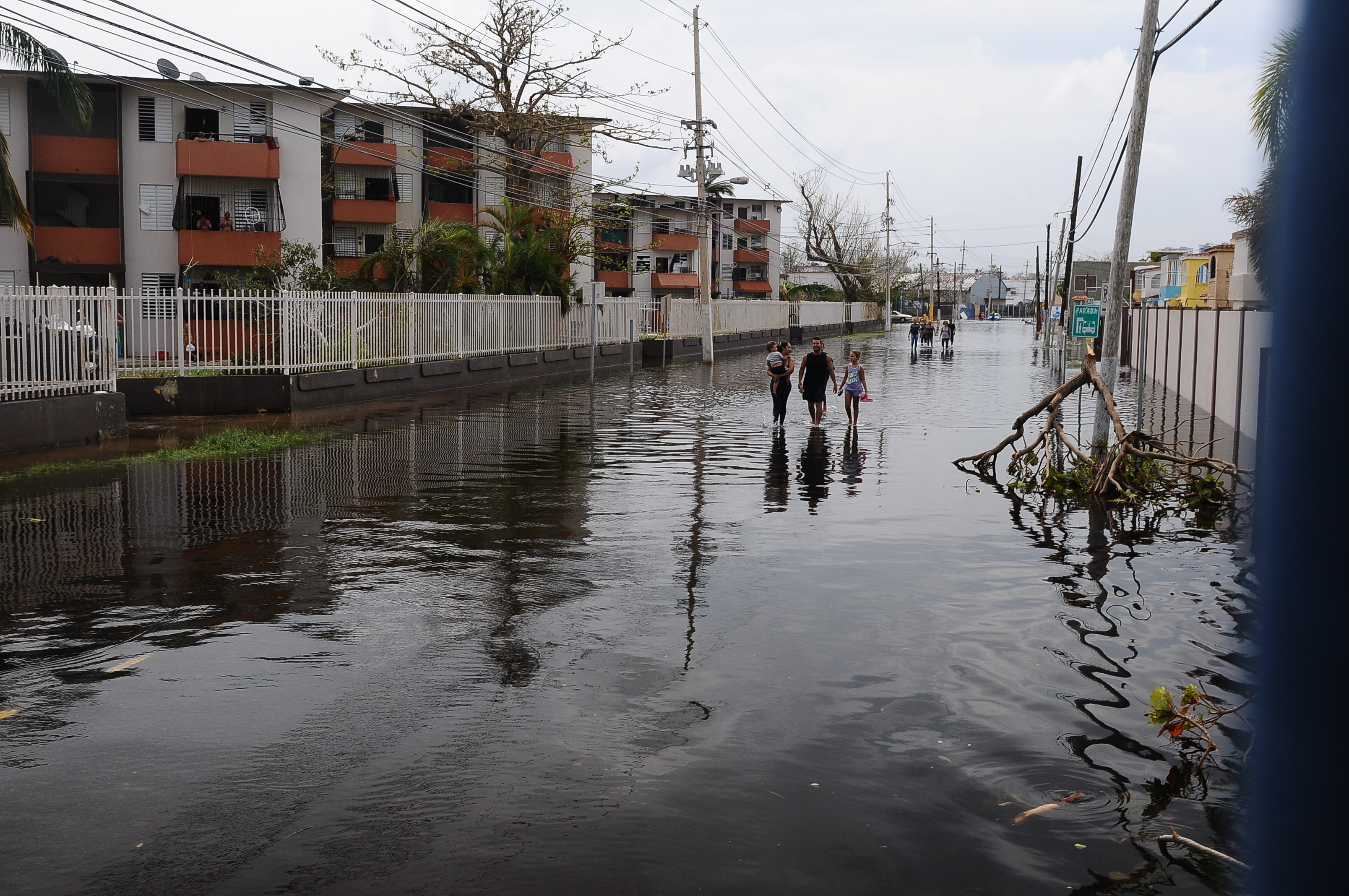
Defense Secretary Jim Mattis said the US military's response to devestating flooding in Puerto Rico will be a long-term effort and could impact future deployments of the units that responded. Puerto Rico National Guard photo by Sgt. Jose Ahiram Diaz-Ramos.
The US military’s response to Hurricane Maria in Puerto Rico could be so lengthy it may impact the deployments of the units that have responded, Defense Secretary Jim Mattis told lawmakers Tuesday.
There is no “lack of resources” coming from the Defense Department, Mattis said in response to questions from the Senate Armed Services Committee on the alleged slow federal response to the storm.
“We are ready to go, even to the point that it’s going to impact the deployments, perhaps, of some of these troops overseas next year because we’ve interrupted their preparation,” Mattis said during a Tuesday hearing. “That’s OK when it’s helping fellow Americans, especially, although we also help some of the other small countries that were hard hit. But when it comes to helping Americans it’s all hands on deck.”
There are more than 10,000 troops on the ground in both Puerto Rico and the US Virgin Islands as of Tuesday morning, with 7,000 of them from the National Guard, Chairman of the Joint Chiefs of Staff Gen. Joseph Dunford said.
The US military continued to respond Tuesday to the storm. USAF aircraft flew 11 strategic lift missions, transporting commodities, helicopters, sandbags, and telecommunications equipment. That’s on top of 11 from Monday, according to the Pentagon.
The Defense Logistics Agency on Monday provided more fuel capacity to the island, including 125 drivers for 114 fuel trucks.
The total tilt and rotary wing response increased to 80 on Tuesday, as eight MV-22 Ospreys and two UH-60 Black Hawks arrived. The USS Wasp also arrived with nine MH-60 Sea Hawks and four CH-53 Sea Stallions, according to the Pentagon.
Air National Guard units from Puerto Rico, Illinois, and Wisconsin on Monday were able to restore air traffic control on the island, further allowing more airlift support to fly in.
Most of the island is still without running water and electricity, with about 15 percent of the island’s power expected to be back in two weeks.
President Trump visited Puerto Rico on Tuesday, telling local officials that despite the “overpowering” storm there could have been more fatalities. It is “now acknowledged what a great job we’ve done,” in the storm response, Trump said.
During the appearance, Trump sat beneath a Puerto Rico Air National Guard C-130 and said his administration is spending “hundreds of millions of dollars” on new airplanes for the Air Force, specifically the F-35.
“You like the F-35? You can’t see it,” he said in Puerto Rico. “You literally can’t see it. It’s hard to fight a plane you can’t see. … That’s an expensive plane you can’t see. As you heard, we cut the price very substantially. Something that other administrations would never have done.”